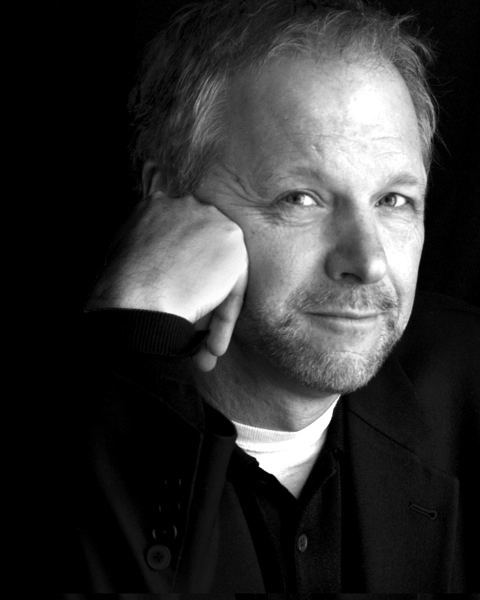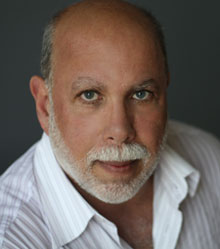Competition Judging: Keeping Evil Out of the Jury Room
By Stuart Isacoff
February 3, 2015
![]() If you want to set off a wave of conspiracy theories, just start a music competition. Suspicion and gossip—especially speculation about sinister dealings behind the scenes—will be virtually unavoidable.
If you want to set off a wave of conspiracy theories, just start a music competition. Suspicion and gossip—especially speculation about sinister dealings behind the scenes—will be virtually unavoidable.
Such controversies have a long history. Celebrated Soviet dancer Maya Plisetskaya complained in her memoirs about “clandestine hermaphrodites” being placed in Soviet athletic contests in the 1950s, and reported that dance and music competitions within the Soviet orbit were regularly fixed. Until recent years, the Tchaikovsky Competition has been smeared for long stretches with that legacy.
So the griping can be justified. Sometimes.
When a Scandal Is Not a Scandal
A few months ago, Musical America reported on pianist Pascal Rogé’s accusations of bias, made against his fellow judges at the Rina Sala Gallo piano competition in Monza, Italy. Rogé had turned to Norman Lebrecht to broadcast his complaints through his “Slipped Disc” blog, which Lebrecht did quite happily. But the pianist was factually wrong and, it turned out, ethically flawed.
The competition’s response was to depart from its own rule of confidentiality and reveal all the judges’ scores, including Rogé’s. The scorecard showed that he gave high marks to the pianist he claimed was unworthy of the ratings she had received from the rest of the jury. Shooting himself in the other foot, Rogé had ignored the rules that automatically dropped the highest and lowest scores from the totals. So he had actually guaranteed the results to which he objected.
A similar “non-scandal” erupted last year at the Indianapolis Violin Competition, again triggered by Lebrecht’s column, when tempers flared over the fact that three of the six finalists were students of a single jury member, Miriam Fried. According to Glen Kwok,  the competition’s executive director, and president of the World Federation of International Music Competitions (the governing body of over 100 competitions), “One of the hallmarks of the International Violin Competition of Indianapolis (IVCI) has always been the integrity of its judging process. From a strict no-discussion policy amongst the jury members, to abstentions by any jury member who has a student in the competition, to a sophisticated computerized scoring system which eliminates any possibility of score manipulation, multiple safeguards have been implemented to ensure a fair, honest, and transparent process.” In this instance, the competition asked Fried to recuse herself from voting during the finals.
the competition’s executive director, and president of the World Federation of International Music Competitions (the governing body of over 100 competitions), “One of the hallmarks of the International Violin Competition of Indianapolis (IVCI) has always been the integrity of its judging process. From a strict no-discussion policy amongst the jury members, to abstentions by any jury member who has a student in the competition, to a sophisticated computerized scoring system which eliminates any possibility of score manipulation, multiple safeguards have been implemented to ensure a fair, honest, and transparent process.” In this instance, the competition asked Fried to recuse herself from voting during the finals.
In dianapolis Violin Competition: One jury fits all
dianapolis Violin Competition: One jury fits all
Kwok’s procedures to guarantee fairness have been widely adopted, though not universally. “We hope we are setting the bar,” he says. “We know that our competitors are trying to launch a career, so the stakes are high.”
Among Indianapolis’s policies to ensure fairness:
- Recorded entries must be video, rather than audio alone, where subtle editing might enhance the performance.
- The jury does not change over the course of the event. “If a juror has sat there for days through all the rounds,” says Kwok, “they have a clearer understanding of the competitors.”
- Each round counts. The results of each round are considered in determining the finals, unlike some competitions where, once a round is over, only the winner moves on (although the preliminaries are weighted differently than the semi-finals and finals).
- The computer doesn’t lie. Indianapolis uses a computer program designed by John McBain to calculate the scores. Each score is adjusted to fit the jury’s overall statistical voting distribution—eliminating weird spikes and craters, abnormal highs and lows. “If someone tries to game the system, the program catches it,” says Kwok. The Van Cliburn International Piano Competition used to use the same program; the Cleveland Piano Competition and the Tchaikovsky still do.
- No talking in the jury room. Finally, no discussion is allowed among jurors, so the loudest and strongest among the pool can’t influence the others. (I was on a jury once where one veteran judge stood up and lectured all the others on what they were failing to hear.)
 The American Pianists Association: Different juries for different rounds
The American Pianists Association: Different juries for different rounds
Unlike Indianapolis, the American Pianists Association, which alternat es annually between classical and jazz, uses three separate juries for selecting the five finalists. First, one jury screens all of the applications to pick the five competitors. Then, a second jury hears those five play solo and chamber performances and ranks them, one to five. Then a third jury hears the five in chamber and concerto performances, the latter with the Indianapolis Symphony, and ranks them, one to five. Scores from juries two and three are tallied and the highest number of votes wins. “The only influence I have,” says President and Artistic Director Joel Harrison, “is in choosing the jury.”
es annually between classical and jazz, uses three separate juries for selecting the five finalists. First, one jury screens all of the applications to pick the five competitors. Then, a second jury hears those five play solo and chamber performances and ranks them, one to five. Then a third jury hears the five in chamber and concerto performances, the latter with the Indianapolis Symphony, and ranks them, one to five. Scores from juries two and three are tallied and the highest number of votes wins. “The only influence I have,” says President and Artistic Director Joel Harrison, “is in choosing the jury.”
 The Cliburn: A simple yes or no
The Cliburn: A simple yes or no
The Van Cliburn International Piano Competition likes an even simpler system, says CEO Jacques Marquis.  In 2002, as head of the Montreal Competition, he used a 100-point scoring method in which the highest and lowest rankings were discarded. But it created confusion: assigning a numerical value to a performance has an arbitrary quality, and “some jury members don’t deal well with numbers,” says Marquis.
In 2002, as head of the Montreal Competition, he used a 100-point scoring method in which the highest and lowest rankings were discarded. But it created confusion: assigning a numerical value to a performance has an arbitrary quality, and “some jury members don’t deal well with numbers,” says Marquis.
So he switched to a simpler system. “My last seven years in Montreal,” he reports, “we used a yes-no process.” He liked the straightforwardness of it, and the fact that it could be explained to any judge, whether French, Chinese, or Italian. It poses one basic question: “Do you want to see this candidate in the next round?”
He now applies these experiences at the Cliburn. “In the finals,” he says, “we ask the jurors to vote for the Gold Medalist—submitting just one name. Then, we ask for them to vote for the Silver Medalist. There is no discussion.” And no worries about manipulation through fancy number work.
 Cincinnati World Piano Competition: Tennis, anyone?
Cincinnati World Piano Competition: Tennis, anyone?
The most radical re-configuring of a music competition is taking place at the Cincinnati World Piano Competition, where the event will be held every three years instead of annually, under new Artistic Director Awadagin Pratt.
Among the changes: if you have ever studied with one of the jurors, don’t apply. “I’ve witnessed two- and five-year exclusions,” says Pratt. “But if someone was your student 12 years ago, he or she is still sort of your child. Besides, when you walk out on stage, if you see your teacher you have a different feeling. I think it’s bad for a competition.”

More dramatic is Pratt’s idea to make the competition structure “more closely resemble a sports tournament,” setting up brackets. “Persons A and B will play against one another. The first round winners will continue competing on the A side; the rest will continue competing on the B side. Each side will make it to the semifinals.” Therefore, everyone gets to be heard numerous times. It is good not only for the musicians, he believes, but for the audience and for conveying a feeling of transparency. (Cincinnati World Piano Competition leaders, left to right: Awadagin Pratt, artistic director; Mark Ernster, executive director; Trey Devey, Cincinnati Symphony and Pops president; Peter Landgren, dean, University of Cincinnati College-Conservatory of Music.)
“Say somebody attends in the afternoon, and they listen to six or seven people. In most competitions, they find out that none of the people they heard made it farther. Then they hear another round, and decide that the best pianists were eliminated. Something seems wrong. This way the person who lost gets to play again, but you know the judges thought one was better.
“This kind of matchup is essentially what happens in the final rounds of every competition,” he says. “Why not have it happen throughout the competition?”
One of the motivations behind these changes—and for the creation of shorter playing sessions, so more participants can be heard in the limited amount of time—is an interest in attracting an audience. As Pratt points out, “You want people to come to a competition, and competitors want to play for an audience. The single most important aspect of competition is the opportunity to be heard.”
Confessions of a Seasoned Jurist

Stuart Isacoff’s latest book is A Natural History of the Piano (Knopf/Vintage).
Copyright © 2025, Musical America